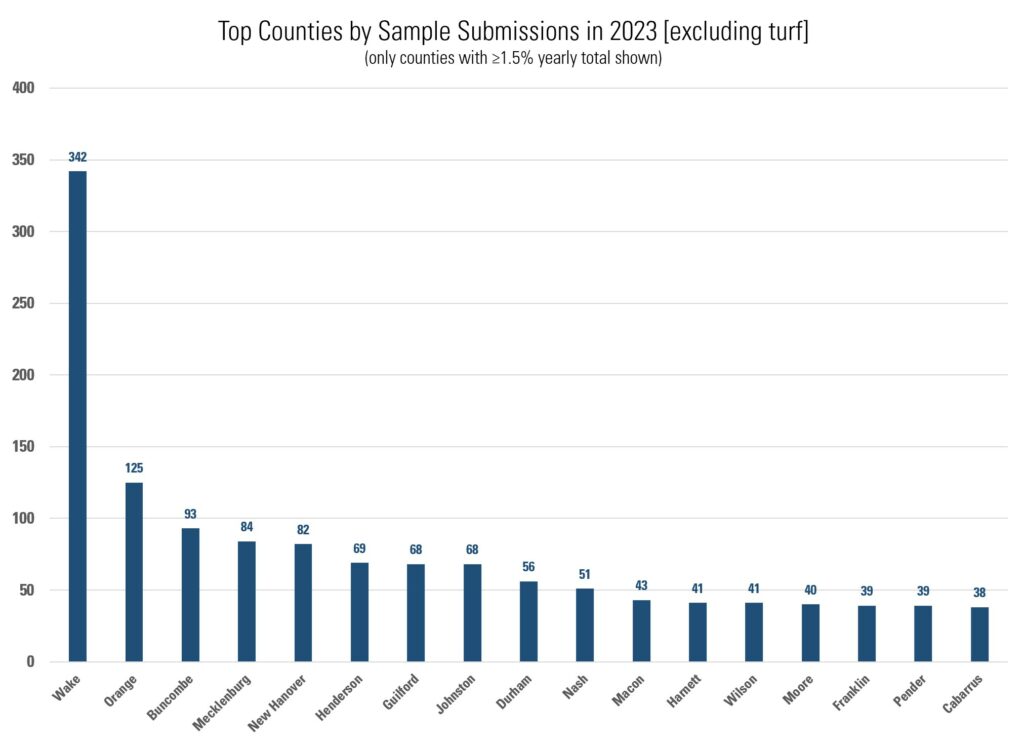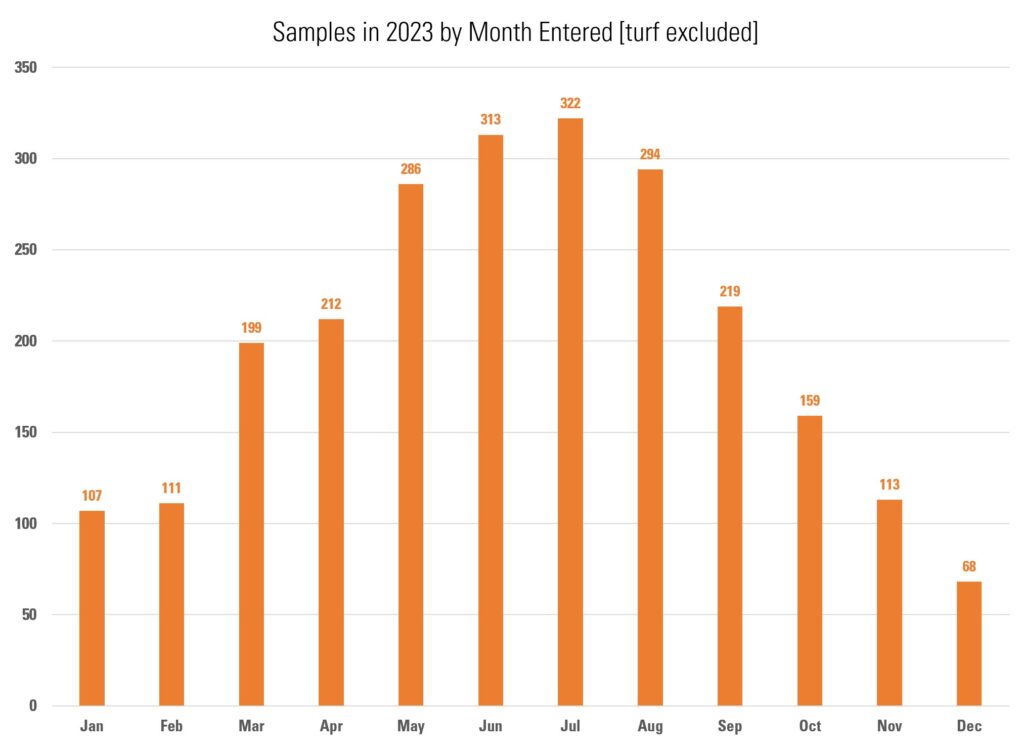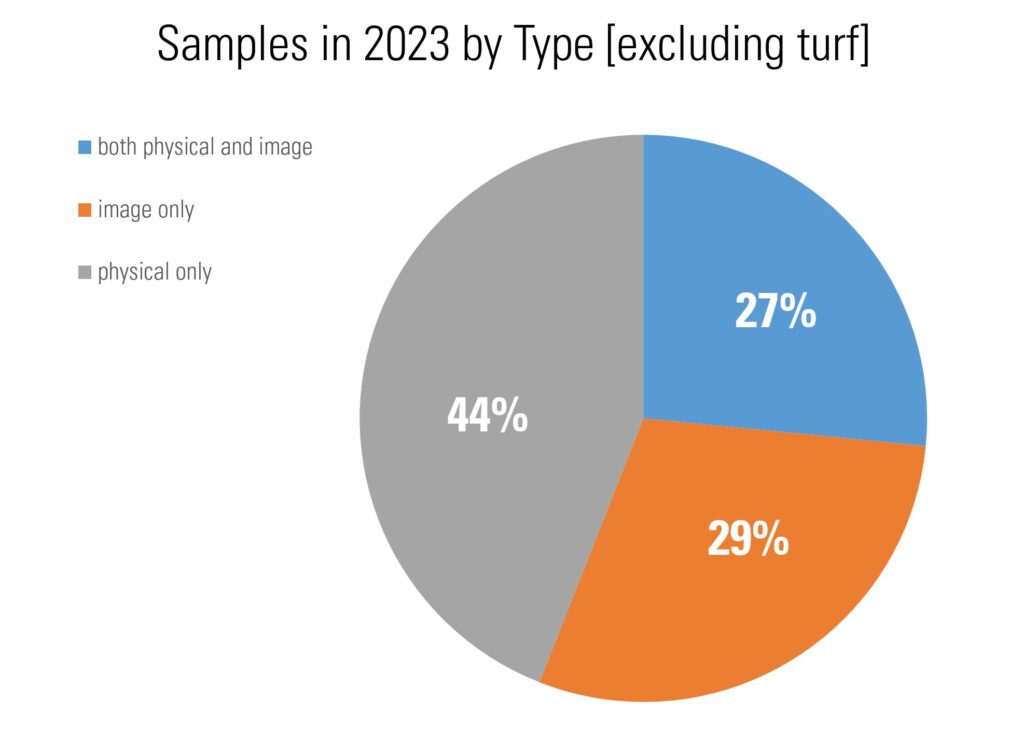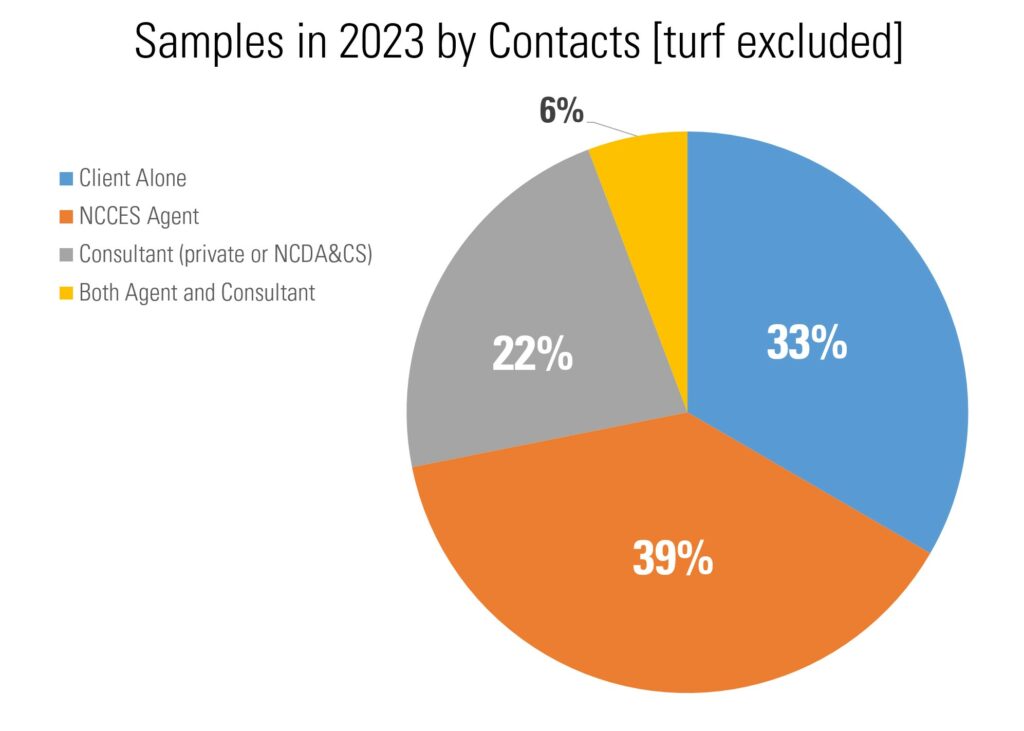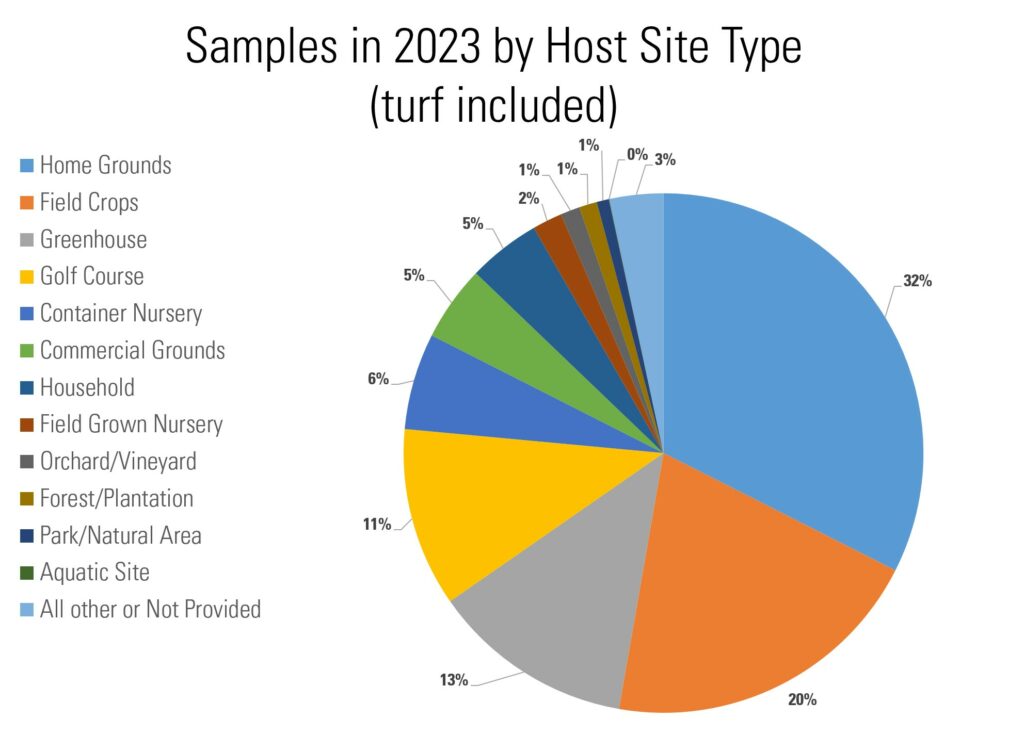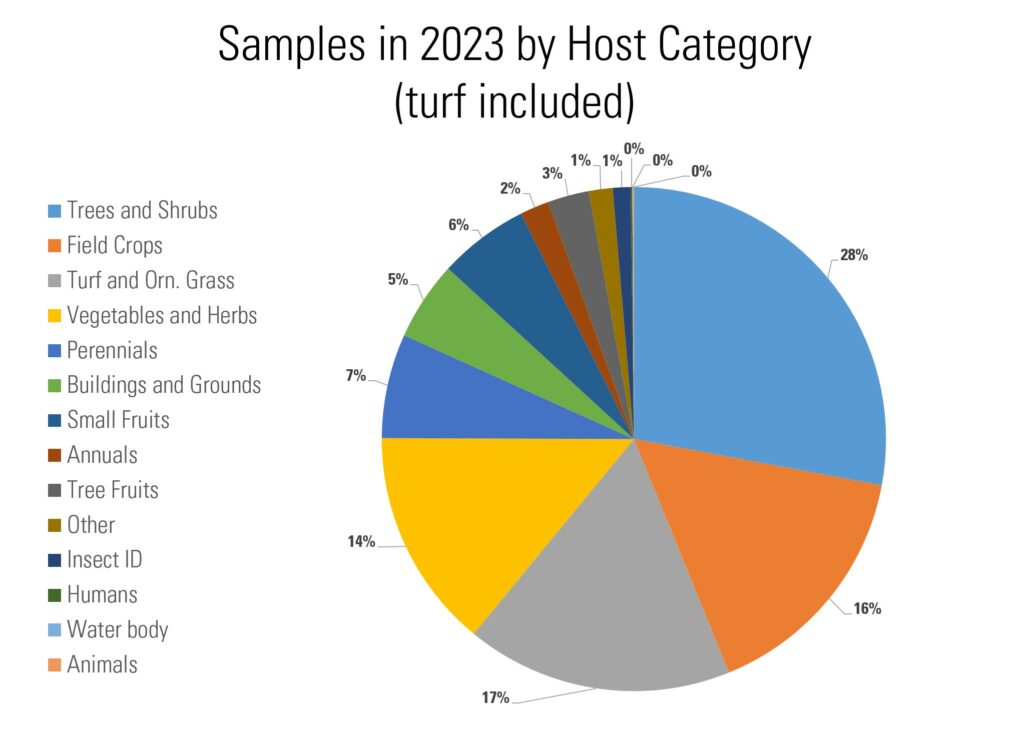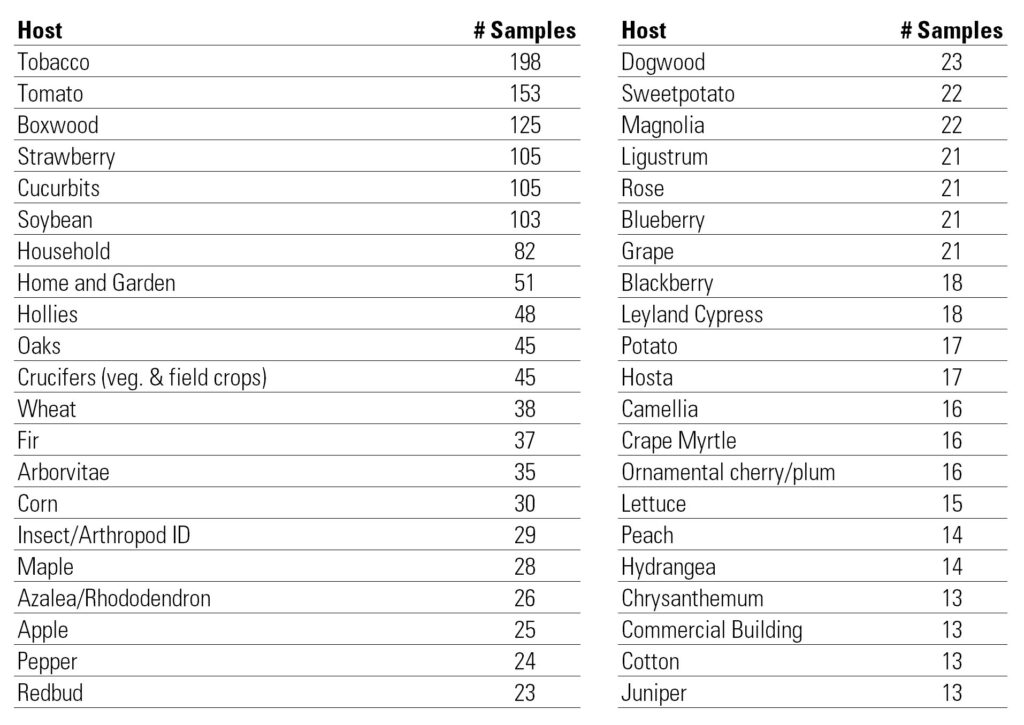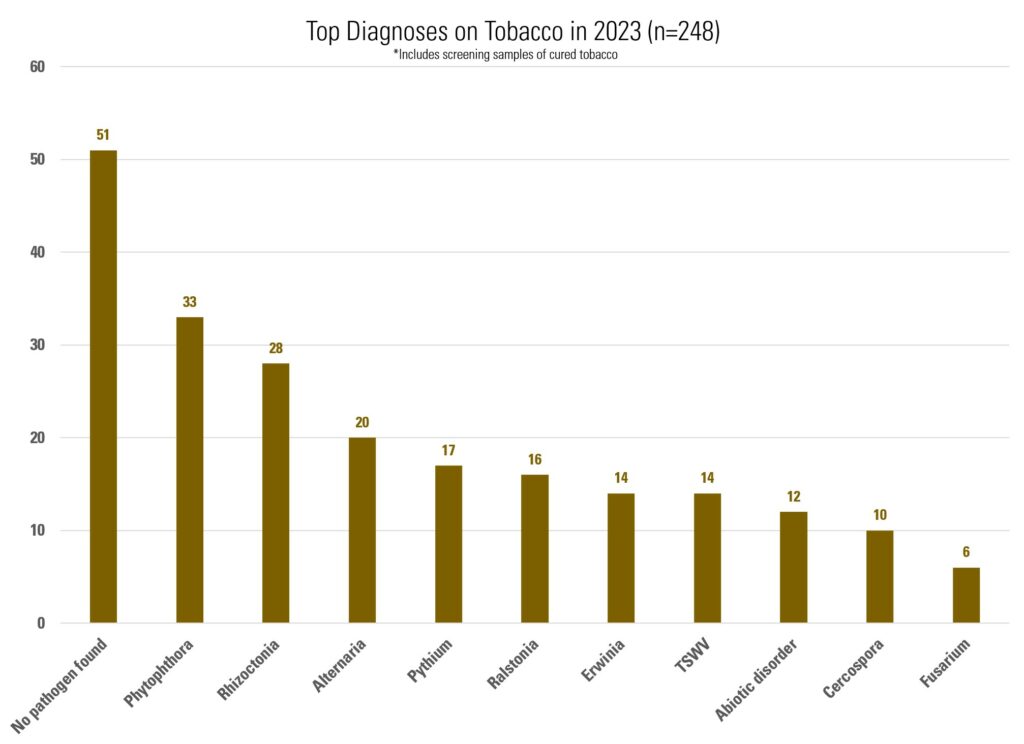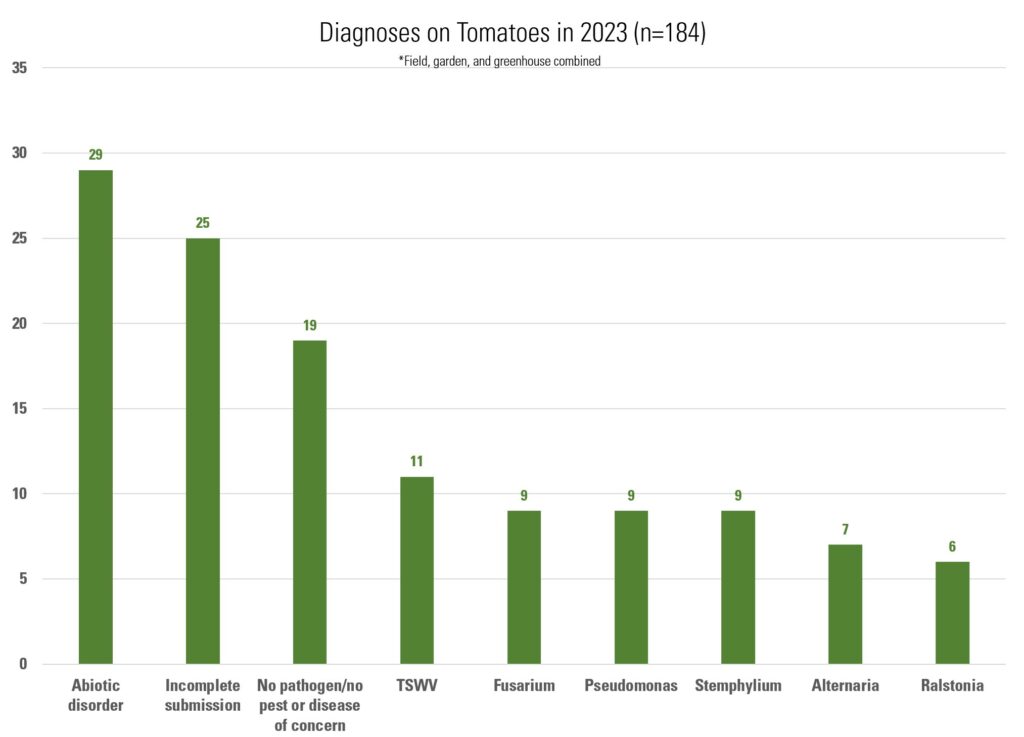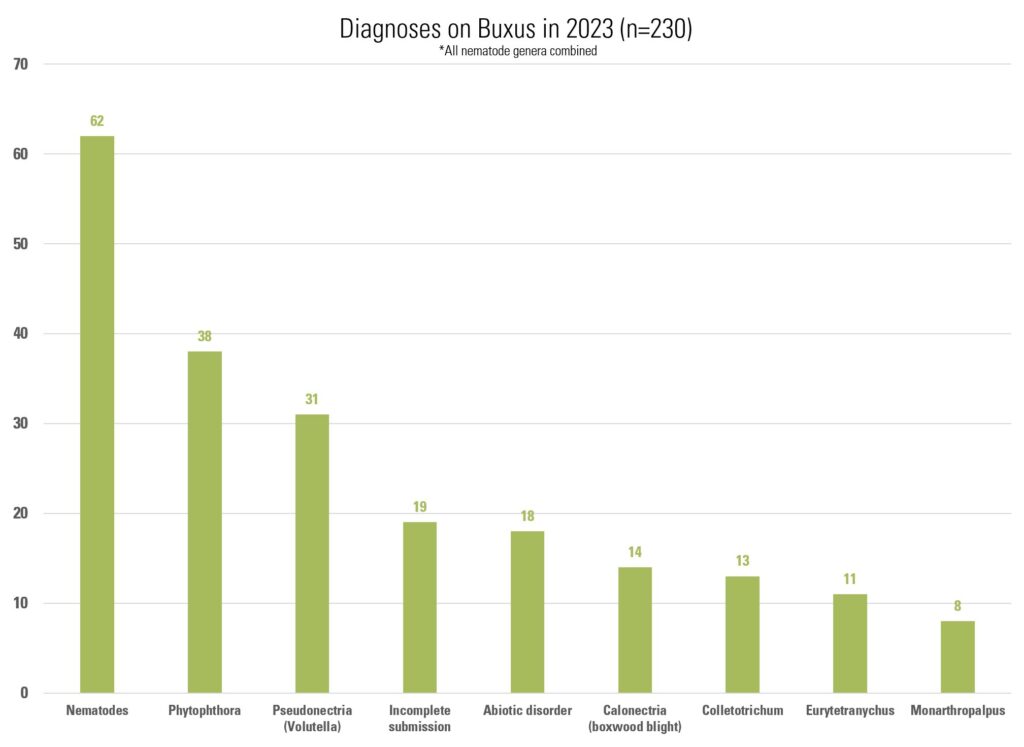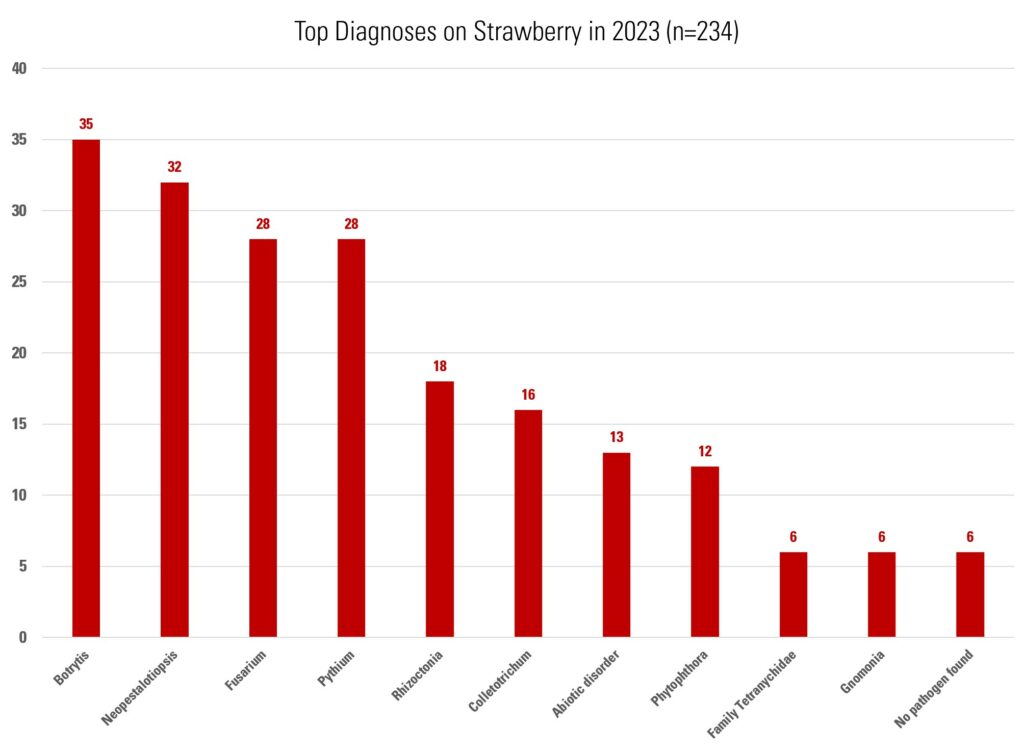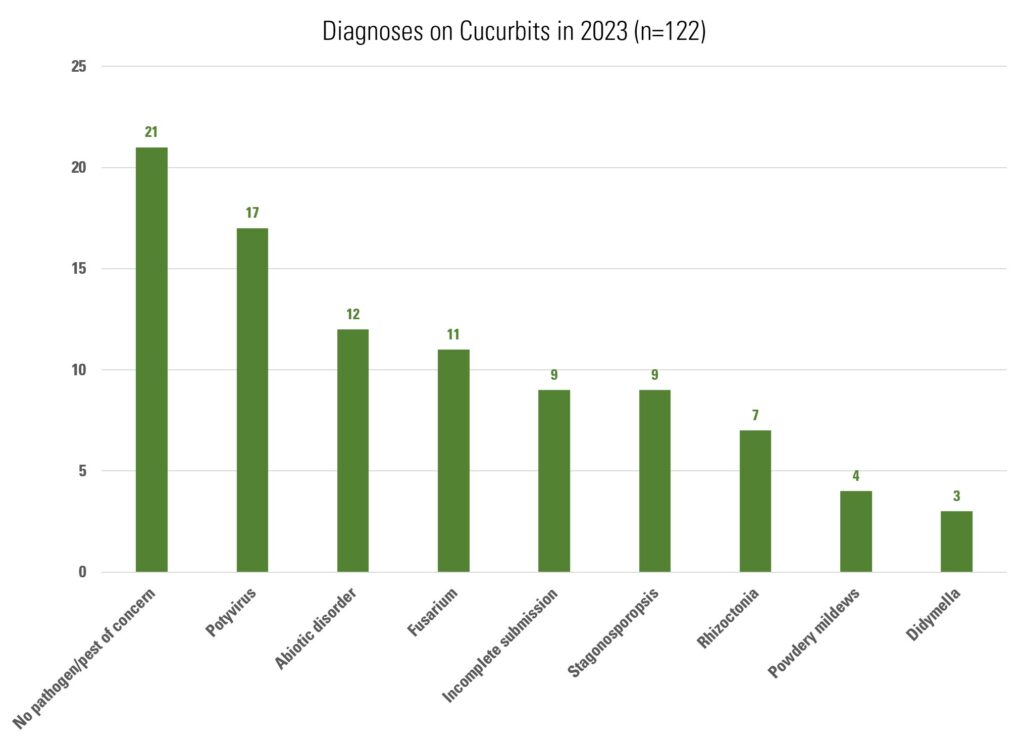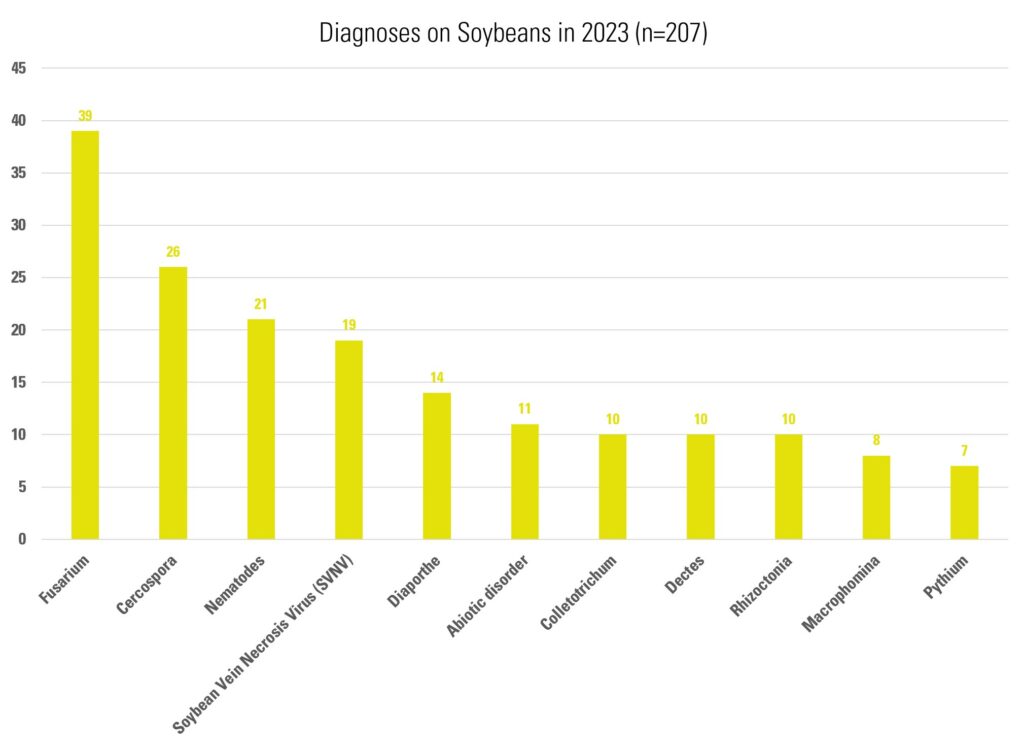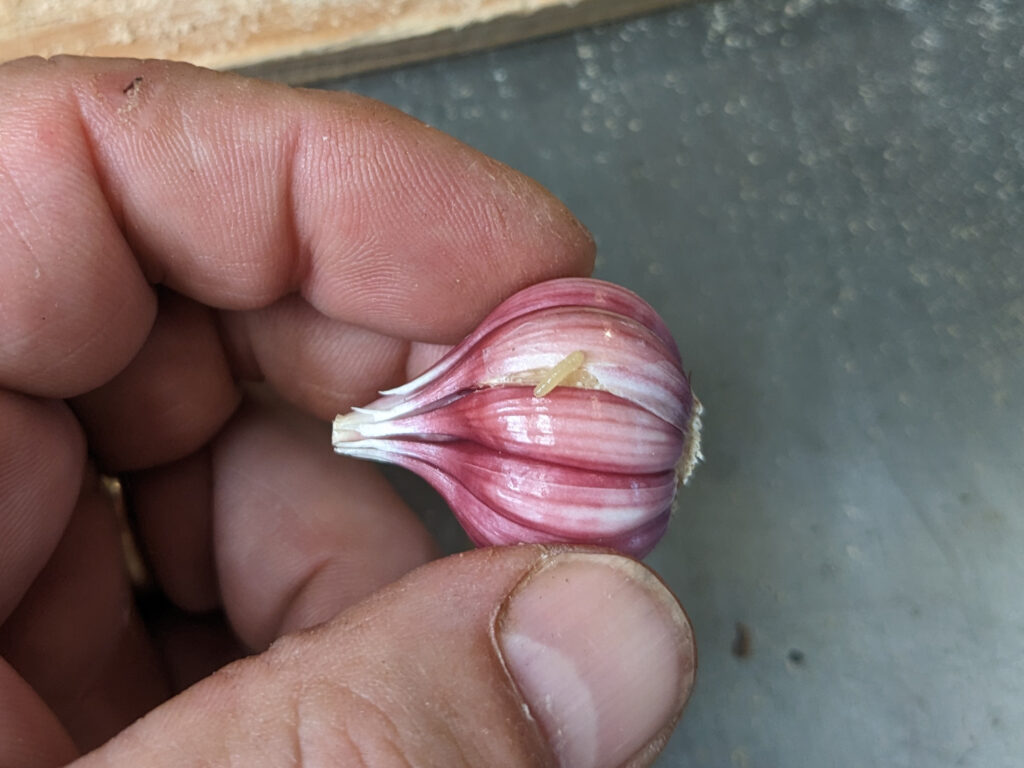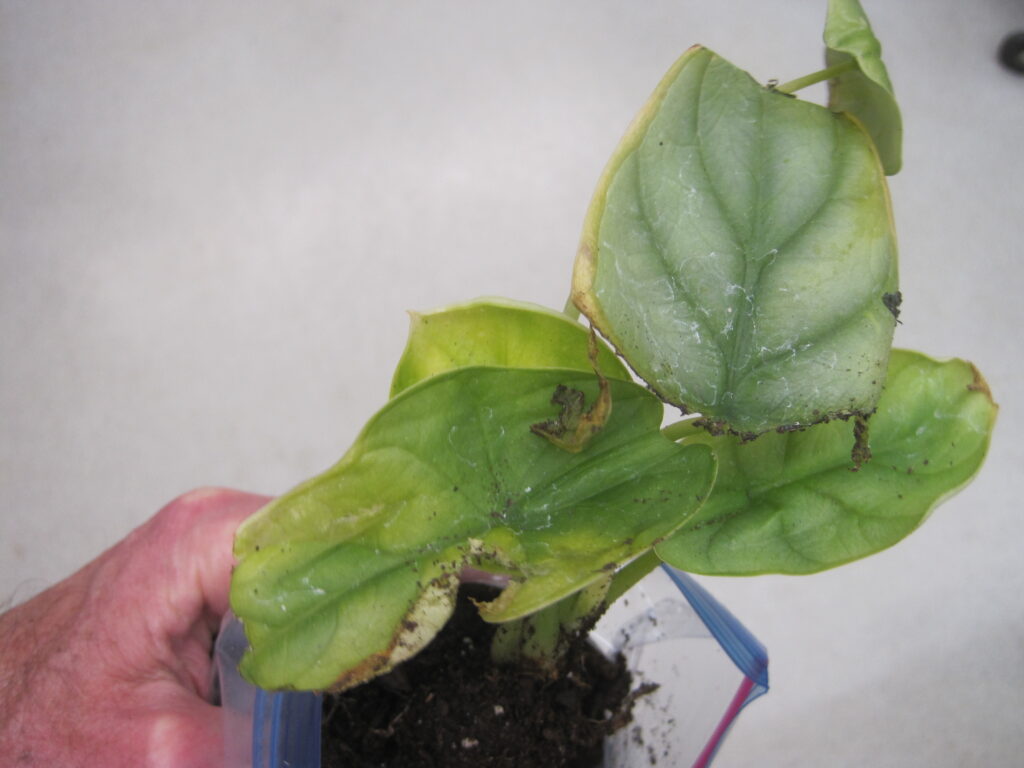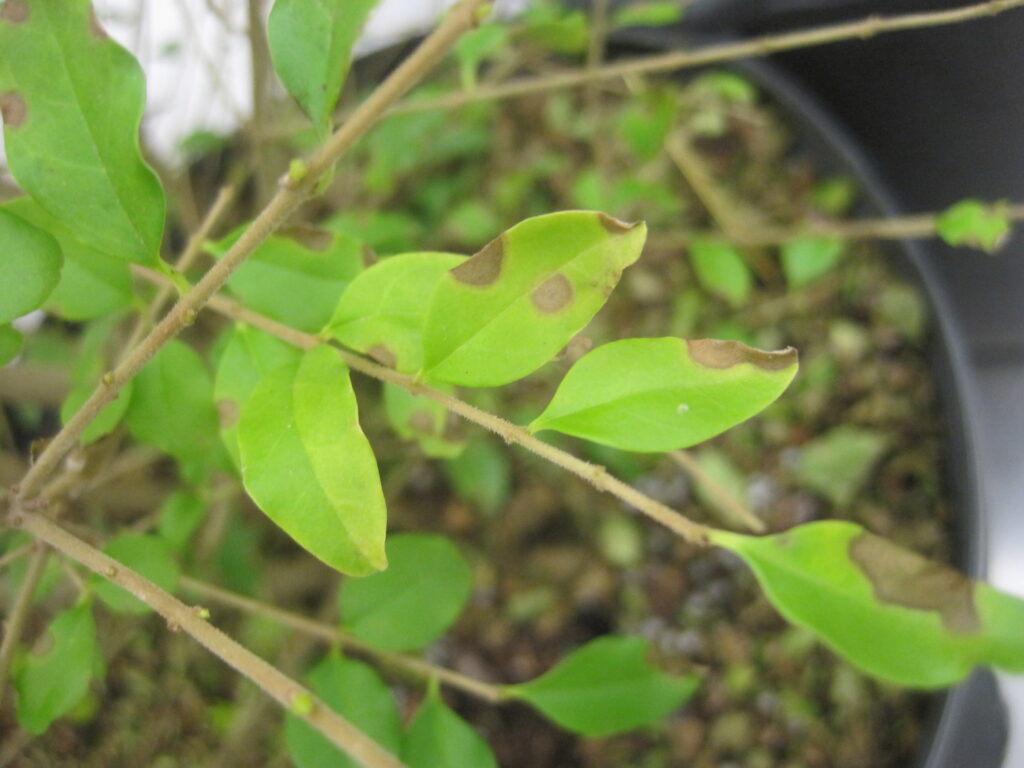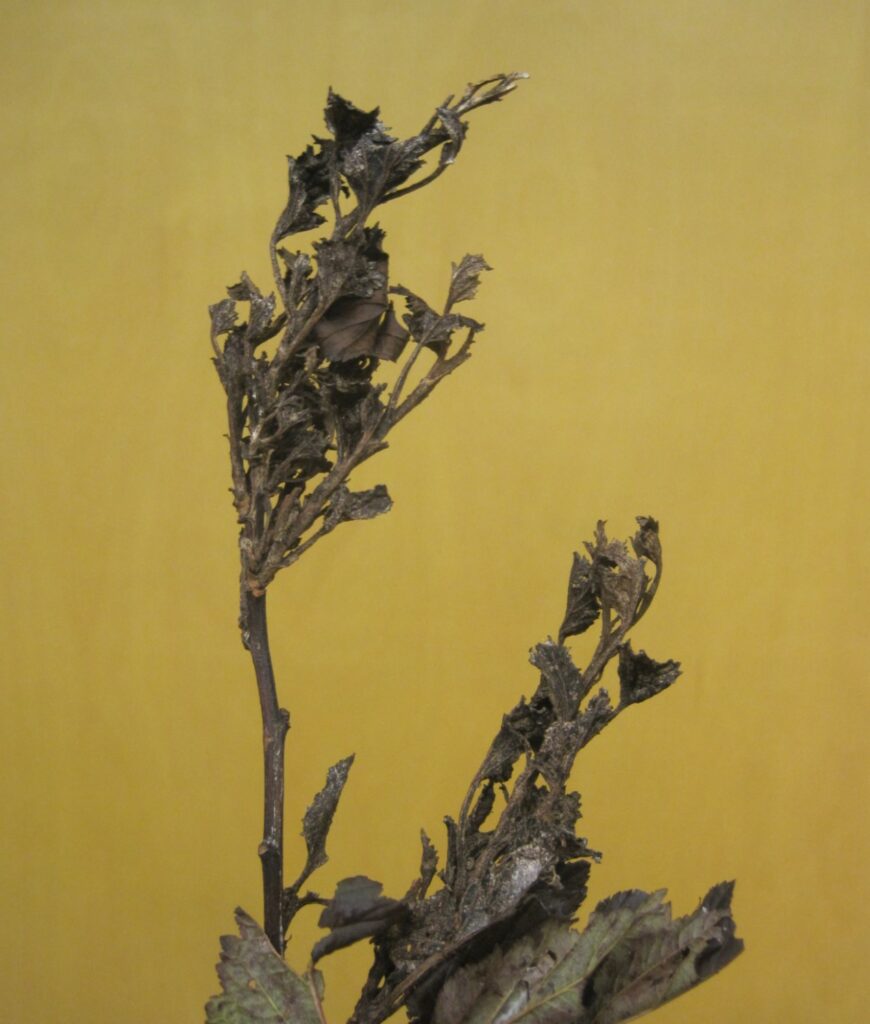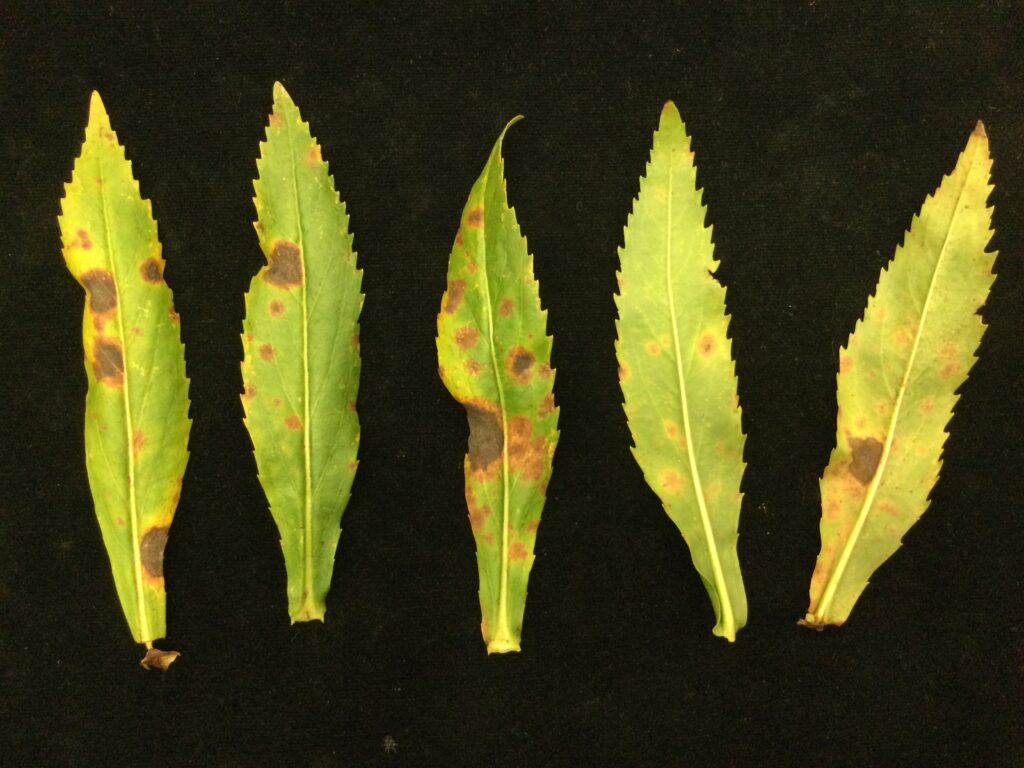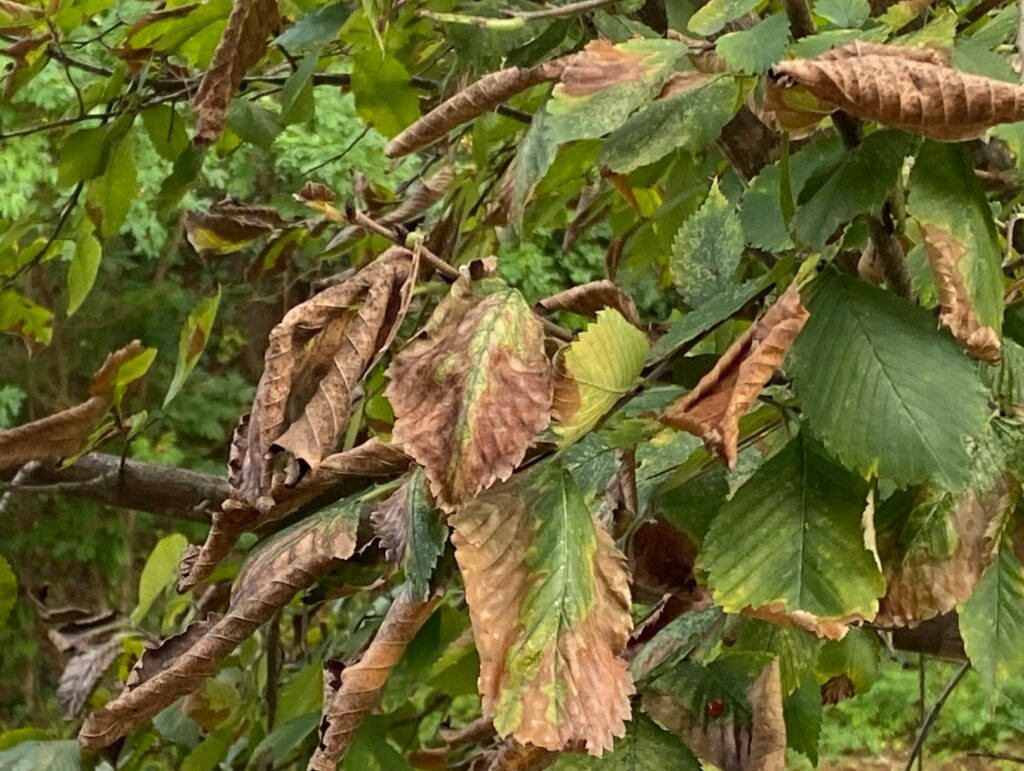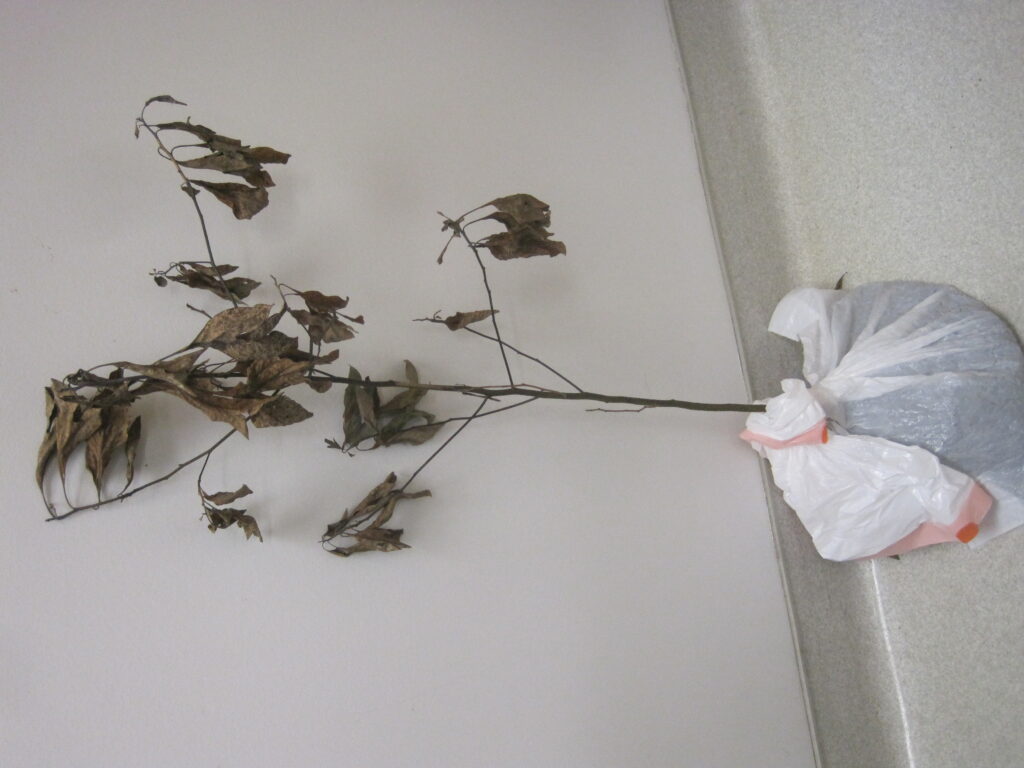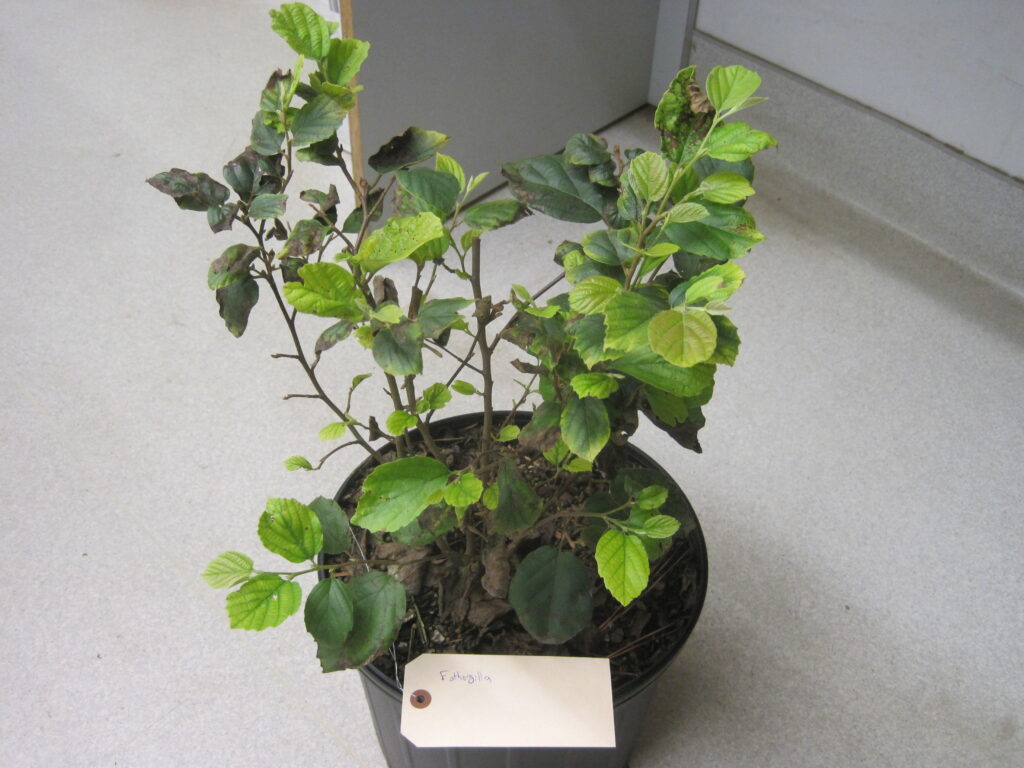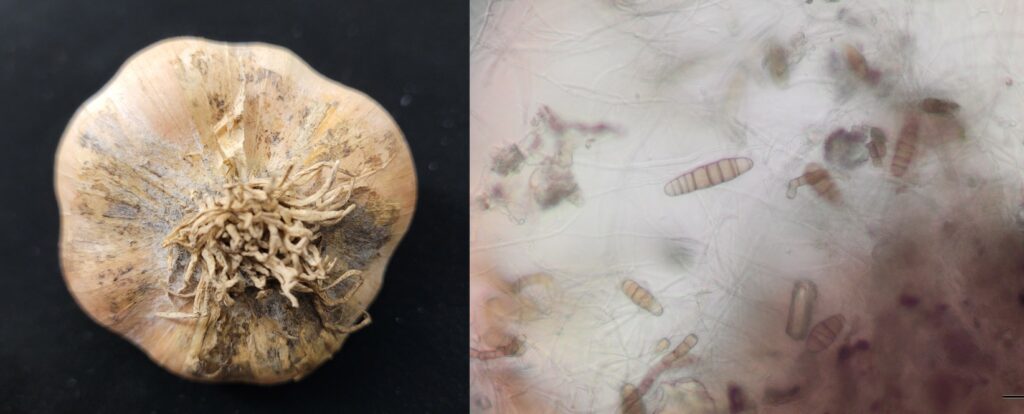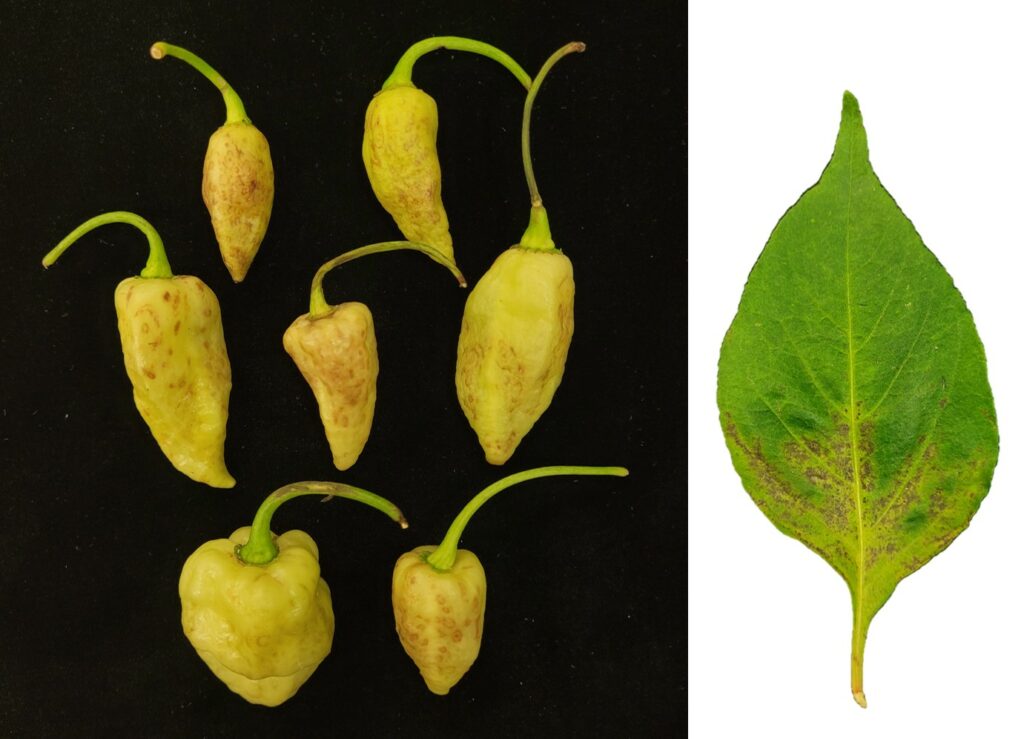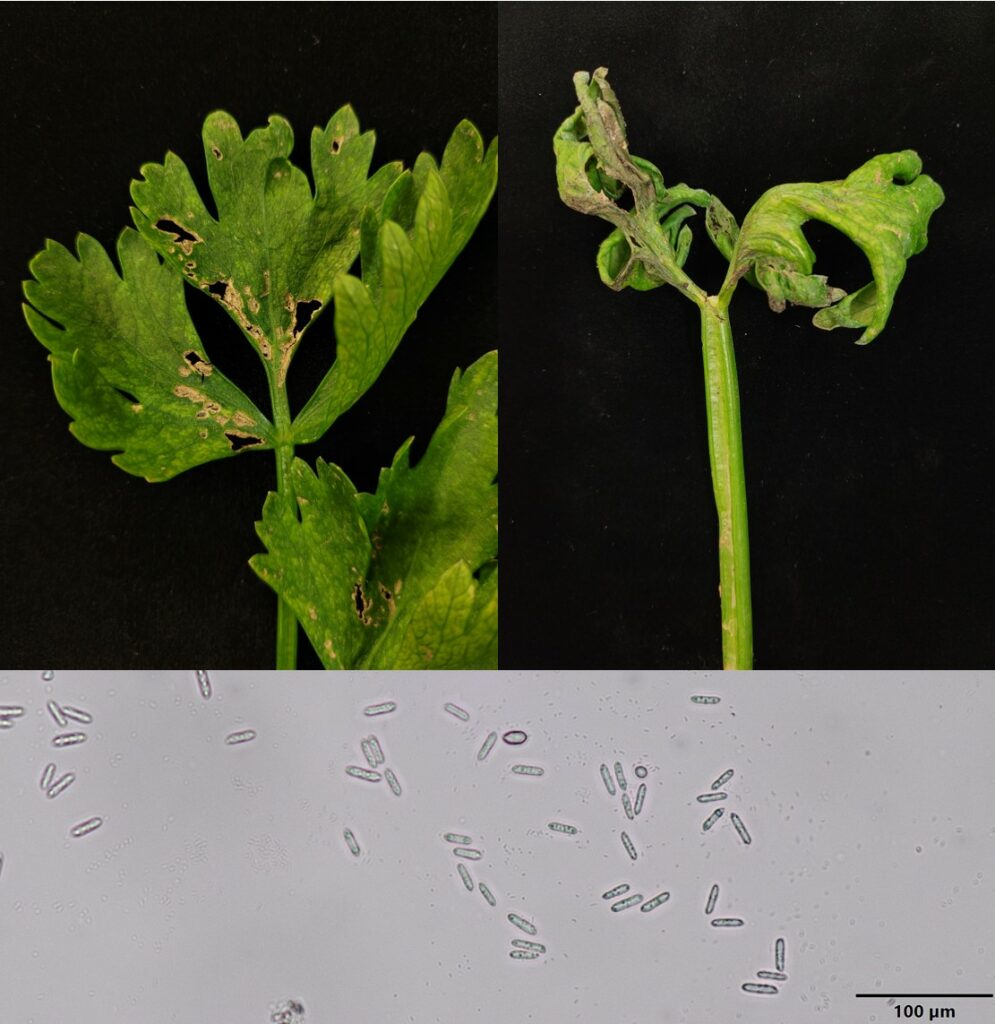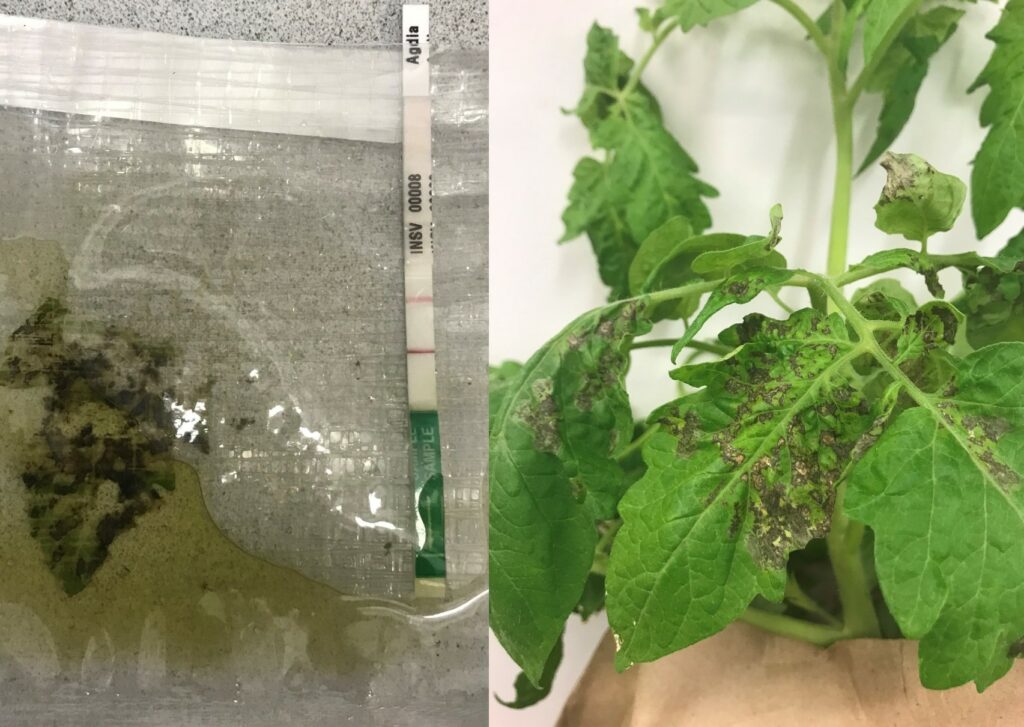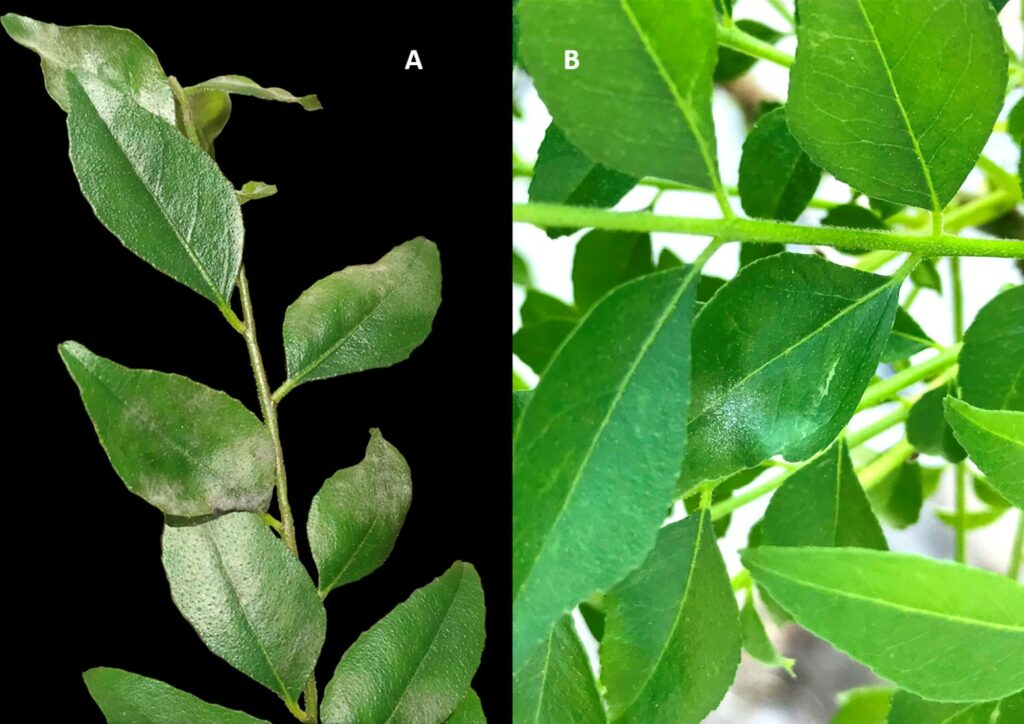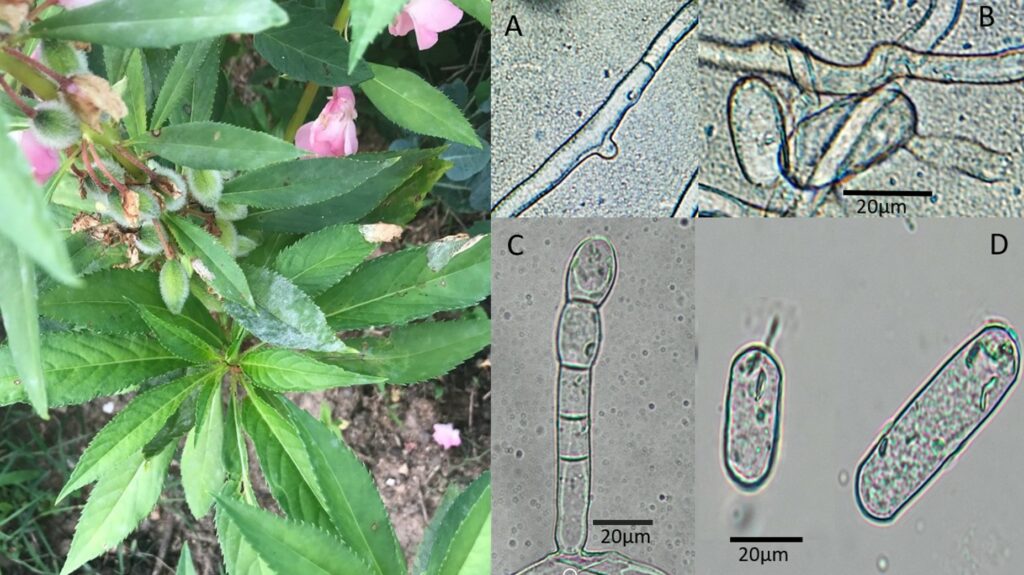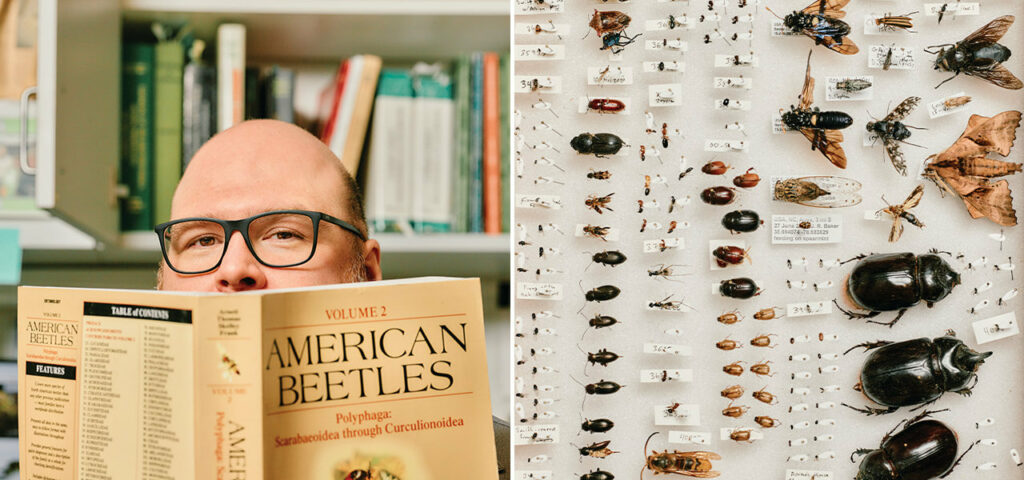2023 Plant Disease and Insect Clinic Year in Review
go.ncsu.edu/readext?949020
en Español / em Português
El inglés es el idioma de control de esta página. En la medida en que haya algún conflicto entre la traducción al inglés y la traducción, el inglés prevalece.
Al hacer clic en el enlace de traducción se activa un servicio de traducción gratuito para convertir la página al español. Al igual que con cualquier traducción por Internet, la conversión no es sensible al contexto y puede que no traduzca el texto en su significado original. NC State Extension no garantiza la exactitud del texto traducido. Por favor, tenga en cuenta que algunas aplicaciones y/o servicios pueden no funcionar como se espera cuando se traducen.
Português
Inglês é o idioma de controle desta página. Na medida que haja algum conflito entre o texto original em Inglês e a tradução, o Inglês prevalece.
Ao clicar no link de tradução, um serviço gratuito de tradução será ativado para converter a página para o Português. Como em qualquer tradução pela internet, a conversão não é sensivel ao contexto e pode não ocorrer a tradução para o significado orginal. O serviço de Extensão da Carolina do Norte (NC State Extension) não garante a exatidão do texto traduzido. Por favor, observe que algumas funções ou serviços podem não funcionar como esperado após a tradução.
English
English is the controlling language of this page. To the extent there is any conflict between the English text and the translation, English controls.
Clicking on the translation link activates a free translation service to convert the page to Spanish. As with any Internet translation, the conversion is not context-sensitive and may not translate the text to its original meaning. NC State Extension does not guarantee the accuracy of the translated text. Please note that some applications and/or services may not function as expected when translated.
Collapse ▲As expected, the summer months were the busiest, with the lab receiving more than 300 samples in both June and July. At 322 samples total, July averaged around 16 samples per day
Samples can consist of images only, physical samples only, or a combination of both. In 2023, most samples were physical only (44%), followed by image-only samples (29%), then a combination of both (27%). Results were similar to 2022, except there were slightly more samples with both images and physical material, and fewer image-only samples.
These samples were submitted by different types of clients. Although direct submissions by clients made up 33% of all submissions, the remaining samples were submitted by state agricultural extension agents, various consultants, or a combination of them. The breakdown is very similar to 2022.
The majority of samples (including those for turf) came from home grounds (32%), followed by crops in the field (20%), greenhouses (13%), golf courses (11%), container nurseries (6%), and commercial grounds or households (both tied at 5%). Household samples dropped a bit from 2022, but this is likely because we discontinued our mold identification service.
The most common types of hosts submitted were trees and shrubs (28%), followed by field crops (16%), turf and ornamental grasses (17%), vegetables and herbs (14%), and perennial plants (7%).
Finally, before we get to diagnoses, below are the “Top 40 Hosts” (actually 42 because of ties) submitted in 2023. Note that 101 plant genera were received only once last year. Note: “Home and Garden” and “Arthropod ID” overlap, with some additional overlap with dwellings.
Results
Below are summaries of the most common diagnoses for our most common hosts.
Tobacco was the most commonly submitted plant for diagnosis, comprising a little more than 8% of all of our samples. Most samples where no pathogen was found resulted from our testing of cured tobacco for blue mold (Peronospora hyoscyami f.sp. tabacina) — thus it’s good we didn’t find any! Phytophthora nicotianae was very common, as were Rhizoctonia, Alternaria, and Pythium. We diagnosed tobacco with the thrips-transmitted Tomato Spotted Wilt Virus (TSWV) fourteen times, which was prevalent last year as well.
Tomatoes were the second most commonly submitted plants in 2023 and, as such, numerous pests and pathogens were found in this host. Abiotic and other disorders were the most commonly identified issues. Beyond that were several plant pathogens, including TSWV, Fusarium, Pseudomonas, Stemphylium and Alternaria.
Boxwoods (Buxus spp.) were commonly sent in to the clinic, many for identification of the destructive disease boxwood blight (Calonectria pseudonaviculata). Nematodes were the most common diagnosis followed by several diseases. Typical boxwood arthropod pests (mites and leafminers) were also identified from boxwoods multiple times. Some issues were either abiotic in nature, or we were unable to identify the cause of the problem due to lack of sufficiently good samples.
Strawberries suffered from numerous diseases, most commonly Botrytis, Neopestalotiopsis, Fusarium, and Pythium. As for arthropods, spider mites made the list (not surprising), but cyclamen mites (Phytonemus pallidus), were only diagnosed once.
Cucurbits also appeared to suffer from more abiotic disorders than disease or arthropod pests. Potyvirus (transmitted by aphids) was the most prevalent disease diagnosis, followed by Fusarium in cucurbits.
Finally, in soybeans the clinic diagnosed several diseases most commonly, including Fusarium, Cercospora, and Soybean vein necrosis virus (SVNV). Nematodes were also very often diagnosed from this host.
Notable Finds
Every year the clinic identifies organisms that are new, either to the country or state, or represent a significant host shift or record. The following are some of the notable organisms we identified in 2023:
| Pest/Pathogen | Host | First Report: NC* | New Pest/Host Combination** |
| allium leafminer (Phytomyza gymnostoma) | Allium spp. (garlic, onion, leeks) | X | |
| Herbaspirillum (likely H. huttiense) | elephant ear (Alocasia) | X | |
| cercosporoid fungus (Thedgonia ligustrina) | ligustrum (Ligustrum sinense) | X | |
| powdery mildew (Podosphaera physocarpi) | ninebark (Physocarpus) | X | |
| cercosporoid fungus (Pseudocercospora physostegiae) | false dragonhead (Physostegia virginiana) | X | |
| bacterial leaf scorch (Xylella fastidiosa) | elms (Ulmus spp.) | X | |
| vascular streak dieback (VSD) | sassafras (Sassafras) | X | |
| black root rot (Berkeleyomyces basicola) | Fothergilla | X | |
| fungus (Embellisia sp.) | garlic (Allium sativum) | X | |
| Cucumber mosaic virus (CMV) | habanero pepper (Capsicum chinense) | X | |
| anthracnose (Colletotrichum sp.) | celery (Apium graveolens dulce) | X | |
| Impatiens necrotic spot virus (INSV) | tomato (Solanum lycopersicum) | X | |
| powdery mildew (Erysiphe diffusa) | curry leaf tree (Bergera koenigii) | X | |
| powdery mildew (Podosphaera xanthii) | garden balsam (Impatiens balsamina) | X |
*species may have been present in the state already, but this was the first official diagnosis
**only significant new pest/host combinations for the state
Other Highlights
In 2023 we welcomed a new member to the lab: Dr. Cora McGehee! Cora hit the ground running, making numerous diagnoses and quickly getting familiar with the lab and working with clients and samples.
Matt Bertone and the clinic were highlighted in the May issue of Our State, North Carolina’s largest magazine. This issue included several stories about extension and it was an honor to be among those articles!
Besides performing diagnoses, lab members gave numerous extension talks and webinars. Mike Munster and Matt Bertone continued to provide updates on arthropods and diseases for the Plants, Pests and Pathogens webinar series for extension master gardener volunteers (EMGVs).
We informally record the most “common” things we see (anecdotally), and in 2023 for arthropods it appeared to be a big year for the following: bald-faced hornets (Dolichovespula maculata), stag beetles (Lucanidae), Japanese beetles (Popillia japonica), green June beetles (Cotinis nitida), larger elm leaf beetles (Monocesta coryli) and late season large caterpillar defoliators (especially oakworms, Anisota spp.). Cora McGehee mentioned she thought that Potyviruses (on cucurbits) and TSWV (on tomatoes) were very common, while Mike Munster says it was a record bad year for boxwoods in home landscapes. Swarna Moparthi mentioned that strawberries with Neopestalotiopsis were noticeably common as was Soybean vein necrosis virus (SVNV) in soybeans.
Lab Publications
Chase, K. D., Graney, L., Ainslie, Z., & Bertone, M. A. (2023). Labena grallator (Say) (Hymenoptera: Ichneumonidae) Found Associated with the Non-Native Callidiellum rufipenne (Motschulsky) (Coleoptera: Cerambycidae). Proceedings of the Entomological Society of Washington, Vol. 125, pp. 187–189. https://doi.org/10.4289/0013-8797.125.1.187
Kirchner, M., Bertone, M., Blaimer, B. B., & Youngsteadt, E. (2023). Colony Structure and Redescription of Males in the Rarely Collected Arboreal Ant, Aphaenogaster Mariae Forel (Hymenoptera: Formicidae). Proceedings of the Entomological Society of Washington, Vol. 125, pp. 77–88. https://doi.org/10.4289/0013-8797.125.1.77
Oten, Kelly LF, Eric Day, Theresa Dellinger, Heather Harmon Disque, Lawrence E. Barringer, Jessica Cancelliere, Liam Somers, and Matthew A. Bertone. “First records of elm zigzag sawfly (Hymenoptera: Argidae) in the United States.” Journal of Integrated Pest Management, 14, no. 1 (2023): 12. https://doi.org/10.1093/jipm/pmad009
Bertone, M. (2023). Manual of Afrotropical Diptera, Volume 3: Brachycera–Cyclorrhapha, excluding Calyptratae. American Entomologist. https://doi.org/10.1093/ae/tmad071
Bertone, Matthew A., Kelly L. F. Oten, Emmeline J. Redick, Abigail R. Ratcliff “Notes on Larvae of the Rarely-Collected Wood Gnat Genus Olbiogaster Osten Sacken (Diptera: Anisopodidae),” Proceedings of the Entomological Society of Washington, 124(4), 873-876, (14 July 2023)
Moparthi, S., Johnson, A., and Braun, U. 2023. Podosphaera cerasi- An old foe of sweet cherry with a new name –its biology, epidemiology, and beyond. Journal of Plant Pathology. DOI: doi.org/10.1007/s42161-023-01354-9
Moparthi, S., Jailani A.A.K, and Braun, U. 2023. First record of Erysiphe diffusa causing powdery mildew on Bergera koenigii in the USA. British Society for Plant Pathology. DOI: 10.1002/ndr2.12175
Bradshaw, M. Boufford, D., Braun, U., Castlebury, L., Dominick, S., Moparthi, S., Jennings, K., Maust A., Pandey, B., Slack, S., Pfister, D. 2023. An in-depth evaluation of powdery mildew hosts reveals one of the world’s most common and widespread fungal plant pathogens. Plant Disease. DOI: 10.1094/PDIS-07-23-1471-RE
Moparthi, S., and Kleczewski, N. 2023. First report of curvularia leaf spot on Zea mays caused by Curvularia lunata in North Carolina. Plant Disease. DOI: doi.org/10.1094/PDIS-10-22-2306-PDN
Moparthi, S., Parikh, L.P., Troth, E.E.G., and Burrows, M. E. 2023. Identification and prevalence of seed-borne Botrytis spp. in pulses of Montana. Plant Disease. DOI: doi.org/10.1094/PDIS-05-22-1236-RE
Bradshaw, M. Aime, C., Maust A., Moparthi, S., Jennings, K., Pane, A., Hendrix, D., Pandey, B., Rokas, A., Yuanning, L., Pfister, D. 2023. Extensive intragenomic variation in the internal transcribed spacer (ITS) region, the universal barcode in kingdom fungi. iScience. 10.1016/j.isci.2023.107317
Conclusions
The PDIC received numerous samples in 2023, resulting in thousands of diagnoses that helped homeowners, growers, researchers, and other clients identify plant problems and arthropods. Many of these diagnoses lead directly to timely and accurate management recommendations. Samples also helped agricultural extension agents and extension master gardener volunteers (EMGVs) learn to diagnose issues for themselves, by verifying the culprits (or bystanders).
Finally, we are very grateful to have so many collaborators and specialists who aid us in diagnosing related plant issues. There are too many to name individually, but we appreciate the help from members of NC State Horticultural Science, Crop and Soil Sciences, Plant and Microbial Biology, as well as specialists from the North Carolina Department of Agriculture and Consumer Services and other organizations.
We look forward to serving you in 2024!



